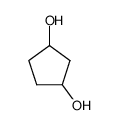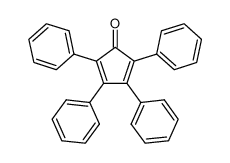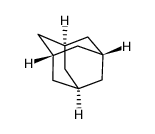1.Identification
1.1 GHS Product identifier
| Product name | Dicyclopentadiene |
|---|
1.2 Other means of identification
| Product number | - |
|---|---|
| Other names | 4,7-Methano-1H-indene,3a,4,7,7a-tetrahydro- |
1.3 Recommended use of the chemical and restrictions on use
| Identified uses | For industry use only. Intermediates,Paint additives and coating additives not described by other categories |
|---|---|
| Uses advised against | no data available |
1.4 Supplier's details
| Company | MOLBASE (Shanghai) Biotechnology Co., Ltd. |
|---|---|
| Address | Floor 4 & 5, Building 12, No. 1001 North Qinzhou Road, Xuhui District, Shanghai, China |
| Telephone | +86(21)64956998 |
| Fax | +86(21)54365166 |
1.5 Emergency phone number
| Emergency phone number | +86-400-6021-666 |
|---|---|
| Service hours | Monday to Friday, 9am-5pm (Standard time zone: UTC/GMT +8 hours). |
2.Hazard identification
2.1 Classification of the substance or mixture
Flammable liquids, Category 2
Acute toxicity - Oral, Category 4
Skin irritation, Category 2
Eye irritation, Category 2
Acute toxicity - Inhalation, Category 4
Specific target organ toxicity – single exposure, Category 3
Hazardous to the aquatic environment, long-term (Chronic) - Category Chronic 2
2.2 GHS label elements, including precautionary statements
| Pictogram(s) |    |
|---|---|
| Signal word | Danger |
| Hazard statement(s) | H225 Highly flammable liquid and vapour H302 Harmful if swallowed H315 Causes skin irritation H319 Causes serious eye irritation H332 Harmful if inhaled H335 May cause respiratory irritation H411 Toxic to aquatic life with long lasting effects |
| Precautionary statement(s) | |
| Prevention | P210 Keep away from heat, hot surfaces, sparks, open flames and other ignition sources. No smoking. P233 Keep container tightly closed. P240 Ground and bond container and receiving equipment. P241 Use explosion-proof [electrical/ventilating/lighting/...] equipment. P242 Use non-sparking tools. P243 Take action to prevent static discharges. P280 Wear protective gloves/protective clothing/eye protection/face protection. P264 Wash ... thoroughly after handling. P270 Do not eat, drink or smoke when using this product. P261 Avoid breathing dust/fume/gas/mist/vapours/spray. P271 Use only outdoors or in a well-ventilated area. P273 Avoid release to the environment. |
| Response | P303+P361+P353 IF ON SKIN (or hair): Take off immediately all contaminated clothing. Rinse skin with water [or shower]. P370+P378 In case of fire: Use ... to extinguish. P301+P312 IF SWALLOWED: Call a POISON CENTER/doctor/…if you feel unwell. P330 Rinse mouth. P302+P352 IF ON SKIN: Wash with plenty of water/... P321 Specific treatment (see ... on this label). P332+P313 If skin irritation occurs: Get medical advice/attention. P362+P364 Take off contaminated clothing and wash it before reuse. P305+P351+P338 IF IN EYES: Rinse cautiously with water for several minutes. Remove contact lenses, if present and easy to do. Continue rinsing. P337+P313 If eye irritation persists: Get medical advice/attention. P304+P340 IF INHALED: Remove person to fresh air and keep comfortable for breathing. P312 Call a POISON CENTER/doctor/…if you feel unwell. P391 Collect spillage. |
| Storage | P403+P235 Store in a well-ventilated place. Keep cool. P403+P233 Store in a well-ventilated place. Keep container tightly closed. P405 Store locked up. |
| Disposal | P501 Dispose of contents/container to ... |
2.3 Other hazards which do not result in classification
none
3.Composition/information on ingredients
3.1 Substances
| Chemical name | Common names and synonyms | CAS number | EC number | Concentration |
|---|---|---|---|---|
| Dicyclopentadiene | Dicyclopentadiene | 77-73-6 | none | 100% |
4.First-aid measures
4.1 Description of necessary first-aid measures
General advice
Consult a physician. Show this safety data sheet to the doctor in attendance.
If inhaled
Fresh air, rest.
In case of skin contact
Remove contaminated clothes. Rinse and then wash skin with water and soap.
In case of eye contact
First rinse with plenty of water for several minutes (remove contact lenses if easily possible), then refer for medical attention.
If swallowed
Rinse mouth. Refer for medical attention .
4.2 Most important symptoms/effects, acute and delayed
LIQUID OR SOLID: Irritating to skin and eyes. (USCG, 1999)
4.3 Indication of immediate medical attention and special treatment needed, if necessary
Immediate First Aid: Ensure that adequate decontamination has been carried out. If patient is not breathing, start artificial respiration, preferably with a demand-valve resuscitator, bag-valve-mask device, or pocket mask, as trained. Perform CPR if necessary. Immediately flush contaminated eyes with gently flowing water. Do not induce vomiting. If vomiting occurs, lean patient forward or place on left side (head-down position, if possible) to maintain an open airway and prevent aspiration. Keep patient quiet and maintain normal body temperature. Obtain medical attention.
5.Fire-fighting measures
5.1 Extinguishing media
Suitable extinguishing media
Suitable extinguishing media: Use water spray, alcohol-resistant foam, dry chemical or carbon dioxide.
5.2 Specific hazards arising from the chemical
FLAMMABLE. Flashback along vapor trail may occur. Vapor may explode if ignited in an enclosed area. (USCG, 1999)
5.3 Special protective actions for fire-fighters
Wear self-contained breathing apparatus for firefighting if necessary.
6.Accidental release measures
6.1 Personal precautions, protective equipment and emergency procedures
Use personal protective equipment. Avoid dust formation. Avoid breathing vapours, mist or gas. Ensure adequate ventilation. Evacuate personnel to safe areas. Avoid breathing dust. For personal protection see section 8.
6.2 Environmental precautions
Remove all ignition sources. Personal protection: filter respirator for organic gases and particulates adapted to the airborne concentration of the substance. Do NOT let this chemical enter the environment. Sweep spilled substance into covered sealable containers. Then store and dispose of according to local regulations.
6.3 Methods and materials for containment and cleaning up
ACCIDENTAL RELEASE MEASURES: Personal precautions, protective equipment and emergency procedures: Wear respiratory protection. Avoid breathing vapors, mist or gas. Ensure adequate ventilation. Remove all sources of ignition. Evacuate personnel to safe areas. Beware of vapors accumulating to form explosive concentrations. Vapors can accumulate in low areas; Environmental precautions: Prevent further leakage or spillage if safe to do so. Do not let product enter drains. Discharge into the environment must be avoided; Methods and materials for containment and cleaning up: Contain spillage, and then collect with an electrically protected vacuum cleaner or by wet-brushing and place in container for disposal according to local regulations.
7.Handling and storage
7.1 Precautions for safe handling
Avoid contact with skin and eyes. Avoid formation of dust and aerosols. Avoid exposure - obtain special instructions before use.Provide appropriate exhaust ventilation at places where dust is formed. For precautions see section 2.2.
7.2 Conditions for safe storage, including any incompatibilities
Store only if stabilized. Store in an area without drain or sewer access. Fireproof. Cool. Keep in the dark. Separated from strong oxidants.Keep container tightly closed in a dry and well-ventilated place. Containers which are opened must be carefully resealed and kept upright to prevent leakage.
8.Exposure controls/personal protection
8.1 Control parameters
Occupational Exposure limit values
Recommended Exposure Limit: 10 Hr Time-Weighted Avg: 5 ppm (30 mg/cu m).
Biological limit values
no data available
8.2 Appropriate engineering controls
Handle in accordance with good industrial hygiene and safety practice. Wash hands before breaks and at the end of workday.
8.3 Individual protection measures, such as personal protective equipment (PPE)
Eye/face protection
Safety glasses with side-shields conforming to EN166. Use equipment for eye protection tested and approved under appropriate government standards such as NIOSH (US) or EN 166(EU).
Skin protection
Wear impervious clothing. The type of protective equipment must be selected according to the concentration and amount of the dangerous substance at the specific workplace. Handle with gloves. Gloves must be inspected prior to use. Use proper glove removal technique(without touching glove's outer surface) to avoid skin contact with this product. Dispose of contaminated gloves after use in accordance with applicable laws and good laboratory practices. Wash and dry hands. The selected protective gloves have to satisfy the specifications of EU Directive 89/686/EEC and the standard EN 374 derived from it.
Respiratory protection
Wear dust mask when handling large quantities.
Thermal hazards
no data available
9.Physical and chemical properties
| Physical state | colourless crystals with a camphor-like odour |
|---|---|
| Colour | Colorless crystalline solid [Note: A liquid above 90 degrees F] |
| Odour | Disagreeable camphor-like odor |
| Melting point/ freezing point | -74°C(lit.) |
| Boiling point or initial boiling point and boiling range | 170°C(lit.) |
| Flammability | Class IC Flammable Liquid: Fl.P. at or above 22.78°C and below 37.78°C.Combustible SolidFlammable. |
| Lower and upper explosion limit / flammability limit | Lower flammable limit: 0.8% by volume; Upper flammable limit: 6.3% by volume |
| Flash point | 24°C |
| Auto-ignition temperature | 505°C (USCG, 1999) |
| Decomposition temperature | 170-172°C |
| pH | no data available |
| Kinematic viscosity | 0.736 cP (est) at 70 deg F |
| Solubility | Insoluble |
| Partition coefficient n-octanol/water (log value) | log Kow = 2.78 |
| Vapour pressure | 10 mm Hg at 47.61°C |
| Density and/or relative density | 0.986g/mLat 25°C(lit.) |
| Relative vapour density | 4.55 (Relative to Air) |
| Particle characteristics | no data available |
10.Stability and reactivity
10.1 Reactivity
no data available
10.2 Chemical stability
Stable under recommended storage conditions. Contains the following stabilizer(s): BHT (0.05 %)
10.3 Possibility of hazardous reactions
Flammable; fire hazardDICYCLOPENTADIENE may react vigorously with oxidizing agents. May react exothermically with reducing agents to release hydrogen gas. Can undergo exothermic polymierization reactions In the presence of various catalysts (such as acids) or initiators, if subjected to heat for prolonged periods, or if contaminated. Many undergo autoxidation upon exposure to the air to form explosive peroxides.
10.4 Conditions to avoid
no data available
10.5 Incompatible materials
Incompatible materials: Strong oxidizing agents, Strong acids, Strong bases
10.6 Hazardous decomposition products
... /Dicyclopentadiene/ decomposes on heating above 170°C.
11.Toxicological information
Acute toxicity
- Oral: LD50 Rat oral 590 mg/kg, M = 512 mg/kg; F = 676 mg/kg. /A hydrocarbon mixture containing approx 71% endo dicyclopentadiene/
- Inhalation: LC50Mice inhalation (6 hr), M: 143 (130 to 157) ppm; F: 130 (103 to 153) ppm. /Approx 97% endo-DCPD and 1% cyclopentadiene/
- Dermal: no data available
Skin corrosion/irritation
no data available
Serious eye damage/irritation
no data available
Respiratory or skin sensitization
no data available
Germ cell mutagenicity
no data available
Carcinogenicity
no data available
Reproductive toxicity
no data available
STOT-single exposure
no data available
STOT-repeated exposure
no data available
Aspiration hazard
no data available
12.Ecological information
12.1 Toxicity
- Toxicity to fish: LC50; Species: Pimephales promelas (Fathead minnow) weight 1.4 g, length 36 mm; Conditions: freshwater, static, pH 6.9-7.3, hardness 35 mg/L CaCO3, dissolved oxygen 3.8-8.8 mg/L; Concentration: 31100 ug/L (95% confidence limit: 23000 to 42000 ug/L) for 96 hr /formulated product
- Toxicity to daphnia and other aquatic invertebrates: EC50; Species: Daphnia magna (Water flea); Concentration: 8.6 mg/L/24 hr; Conditions: not specified; Effect: immobilization.
- Toxicity to algae: no data available
- Toxicity to microorganisms: no data available
12.2 Persistence and degradability
AEROBIC: Dicyclopentadiene, present at 100 mg/L, reached 0% of its theoretical BOD in 2 weeks using an activated sludge inoculum at 30 mg/L in the Japanese MITI test (OECD 301C) which classified the compound as not readily biodegradable(1). Using OECD Guideline 301F (Ready Biodegradability: Manometric Respirometry Test) with an activated sludge inoculum, a petroleum-cracked stream containing 29% dicyclopentadiene had 0% biodegradation of the dicyclopentadiene fraction after 28 days(2). Very slow biotransformation of dicyclopentadiene was observed when it was inoculated with soil and water obtained from the Rocky Mountain Arsenal(3). Two field studies in Alberta, Canada found biodegradation rates of 37-57% in 266 days and not appreciable to 60% in 116 days(4).
12.3 Bioaccumulative potential
A BCF range of 58.9-384 was measured in fish for dicyclopentadiene using OECD method 305C and carp (Cyprinus carpio) which were exposed over an 8-week period(1). According to a classification scheme(3), this BCF range indicates that bioconcentration in aquatic organisms is moderate to high(SRC). A BCF of 53 was measured in bluegill fish (Lepomis macrochirus) using a concentration of 1 mg/L; however, a "disregarded study" flag was applied for environmental fate assessment as the exposure period was only 96 hours(4).
12.4 Mobility in soil
Using a structure estimation method based on molecular connectivity indices(1), the Koc of dicyclopentadiene can be estimated to be 1500(SRC). According to a classification scheme(2), this estimated Koc value suggests that dicyclopentadiene is expected to have low mobility in soil.
12.5 Other adverse effects
no data available
13.Disposal considerations
13.1 Disposal methods
Product
The material can be disposed of by removal to a licensed chemical destruction plant or by controlled incineration with flue gas scrubbing. Do not contaminate water, foodstuffs, feed or seed by storage or disposal. Do not discharge to sewer systems.
Contaminated packaging
Containers can be triply rinsed (or equivalent) and offered for recycling or reconditioning. Alternatively, the packaging can be punctured to make it unusable for other purposes and then be disposed of in a sanitary landfill. Controlled incineration with flue gas scrubbing is possible for combustible packaging materials.
14.Transport information
14.1 UN Number
| ADR/RID: UN2048 | IMDG: UN2048 | IATA: UN2048 |
14.2 UN Proper Shipping Name
| ADR/RID: DICYCLOPENTADIENE |
| IMDG: DICYCLOPENTADIENE |
| IATA: DICYCLOPENTADIENE |
14.3 Transport hazard class(es)
| ADR/RID: 3 | IMDG: 3 | IATA: 3 |
14.4 Packing group, if applicable
| ADR/RID: III | IMDG: III | IATA: III |
14.5 Environmental hazards
| ADR/RID: yes | IMDG: yes | IATA: yes |
14.6 Special precautions for user
no data available
14.7 Transport in bulk according to Annex II of MARPOL 73/78 and the IBC Code
no data available
15.Regulatory information
15.1 Safety, health and environmental regulations specific for the product in question
| Chemical name | Common names and synonyms | CAS number | EC number |
|---|---|---|---|
| Dicyclopentadiene | Dicyclopentadiene | 77-73-6 | none |
| European Inventory of Existing Commercial Chemical Substances (EINECS) | Listed. | ||
| EC Inventory | Listed. | ||
| United States Toxic Substances Control Act (TSCA) Inventory | Listed. | ||
| China Catalog of Hazardous chemicals 2015 | Listed. | ||
| New Zealand Inventory of Chemicals (NZIoC) | Listed. | ||
| Philippines Inventory of Chemicals and Chemical Substances (PICCS) | Listed. | ||
| Vietnam National Chemical Inventory | Not Listed. | ||
| Chinese Chemical Inventory of Existing Chemical Substances (China IECSC) | Listed. | ||
16.Other information
Information on revision
| Creation Date | Aug 12, 2017 |
|---|---|
| Revision Date | Aug 12, 2017 |
Abbreviations and acronyms
- CAS: Chemical Abstracts Service
- ADR: European Agreement concerning the International Carriage of Dangerous Goods by Road
- RID: Regulation concerning the International Carriage of Dangerous Goods by Rail
- IMDG: International Maritime Dangerous Goods
- IATA: International Air Transportation Association
- TWA: Time Weighted Average
- STEL: Short term exposure limit
- LC50: Lethal Concentration 50%
- LD50: Lethal Dose 50%
- EC50: Effective Concentration 50%
References
- IPCS - The International Chemical Safety Cards (ICSC), website: http://www.ilo.org/dyn/icsc/showcard.home
- HSDB - Hazardous Substances Data Bank, website: https://toxnet.nlm.nih.gov/newtoxnet/hsdb.htm
- IARC - International Agency for Research on Cancer, website: http://www.iarc.fr/
- eChemPortal - The Global Portal to Information on Chemical Substances by OECD, website: http://www.echemportal.org/echemportal/index?pageID=0&request_locale=en
- CAMEO Chemicals, website: http://cameochemicals.noaa.gov/search/simple
- ChemIDplus, website: http://chem.sis.nlm.nih.gov/chemidplus/chemidlite.jsp
- ERG - Emergency Response Guidebook by U.S. Department of Transportation, website: http://www.phmsa.dot.gov/hazmat/library/erg
- Germany GESTIS-database on hazard substance, website: http://www.dguv.de/ifa/gestis/gestis-stoffdatenbank/index-2.jsp
- ECHA - European Chemicals Agency, website: https://echa.europa.eu/


















